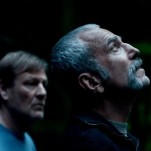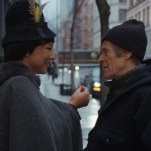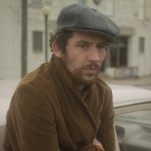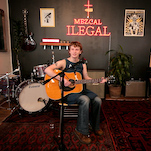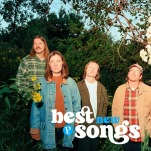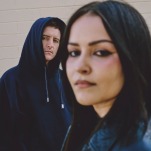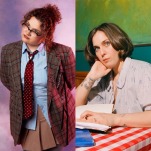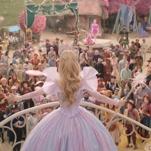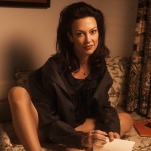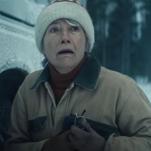Showrunner Monica Beletsky and Stars Talk Bringing History to Life in Apple TV+’s Manhunt
Photo Courtesy of Apple TV+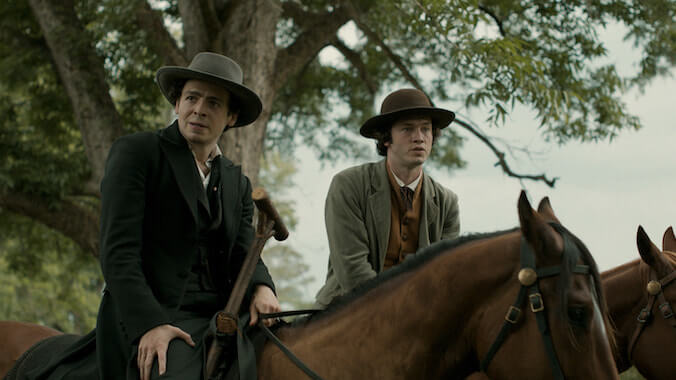
On April 14, 1865 President Abraham Lincoln was shot in the head while watching a play at Ford’s Theatre. In what is one of the most famous events of all time, actor John Wilkes Booth, after shooting Lincoln, jumped onto the stage and yelled the Latin phrase “Sic semper tyrannis” translated as “thus always to tyrants.” The word “tyrant” by Booth refers to Lincoln, who advocated for the passing of the 13th amendment, which would outlaw slavery in the United States. Lincoln died the following morning, which is often where depictions of this event end.
Apple TV+’s Manhunt takes a different approach. Based on the non-fiction book of the same name by James L. Swanson, the series follows the investigation that happened subsequent to the assisination, from Booth’s initial escape to the trials that indicted those involved in what was, in fact, a grand conspiracy. The investigation was led by Secretary of War Edwin Stanton, played in the series by Tobias Menzies. In the years before the assassination, Stanton and Lincoln worked closely, developing a bond and friendship that is a centerpiece of the series.
In a press junket last week, Paste sat down with showrunner and writer Monica Beletsky and several cast members from Manhunt to talk about the show and the implications of this history in contemporary times. Beletsky is the creator of the series, but originally wasn’t familiar with the source material. She became fascinated by the figure of Stanton after learning about the man in her own research.
“I learned that, essentially, we had no president between Lincoln being shot by Booth in the theater and [Andrew] Johnson being sworn in the next day. And so it was like, ‘Who’s this Edwin Stanton guy who was running the country and the investigation during those 12 hours?’ That fascinated me as a dramatic situation.”
On bringing history to life, Beletsky emphasized that she wanted to make it feel as contemporary as possible, while still maintaining historical accuracy. “I didn’t want it to be stuffy or feel distancing to the audience. So I made certain choices like not giving Tobias [Menzies] the Santa Claus-ey beard of Stanton, not giving the ladies certain hairstyles that were in fashion then. To the people at that time, these things were very modern but, to our audience, they’re going to look old fashioned.”
Anthony Boyle prepared for his role as the notorious John Wilkes Booth by reading the letters Booth had written from the ages of 15 to 26. “I […] tried to build up a sense of who he was as a kid, who he was as a man, [and] who he thought he was going to be. Then I would send different parts of the letters to Monica [Beletsky], who would let that inform the script and vice versa.”
During his research, Boyle encountered a plethora of resources about Booth, which sometimes made the process more difficult. “When so many things have been written about someone, it’s hard to get a real version because we’re all different things to different people. So we had to come up with our version of who Booth was, and we landed on [the fact] that he was an asshole,” Boyle said with a laugh.
In the series, Booth is depicted as a man who longs to bask in independent fame and glory, and to separate himself from the acting background of his family. “He feels like he’s in his father’s and his brother’s shadow. He lusts after notoriety and fame, which is mixed in with his racist ideology. And he thinks that [killing Lincoln] is him firmly stepping forward in the history books, becoming a hero. He doesn’t think he’s a villain. He thinks by doing that, he’s freeing his people and he’s going to become a hero. Only we as the audience know that he’s the villain.”
When Booth jumped on the stage of Ford’s Theatre, he famously broke his leg. This becomes a critical plotpoint of the show as Booth repeatedly requires the assistance of others, despite his determination to do everything on his own. “I think it’s probably to do with not wanting to be vulnerable and not wanting to be seen as needing help. I think it goes down to him coveting power and his innate narcissism. He doesn’t want to be seen as weak. You see this from politicians, you see this with fighters, you see this with high achievers: they don’t want help. It’s all about mind over matter,” Boyle said of this character trait.
One of the central figures working behind the scenes was the spy Lafayette Baker, played in the series by Patton Oswalt. Baker was tasked by Stanton to track down Booth, using just about any means necessary. “Objectively, [Baker] is a good cop, but he’s very aware of the reward money and the fame that will come. In a weird way, that made him a more effective pursuer because he’s doing it out of personal gain […] Playing complexity in the middle of chaos was really energizing to get to do,” Oswalt said, highlighting the motivations of his character.
Lovie Simone plays Mary Simms, a former slave-turned-assistant to a doctor who treated Booth while he was on the lam. Simms later becomes a key player in the trial for the criminals wrapped up in the conspiracy. Despite her lack of formal education, Simms is also portrayed as a teacher, which Simone pointed out was historically accurate.
-

-

-

-

-

-

-

-

-

-

-

-

-

-

-

-

-

-

-

-

-

-

-

-

-

-

-

-

-

-

-

-

-

-

-

-

-

-

-

-

